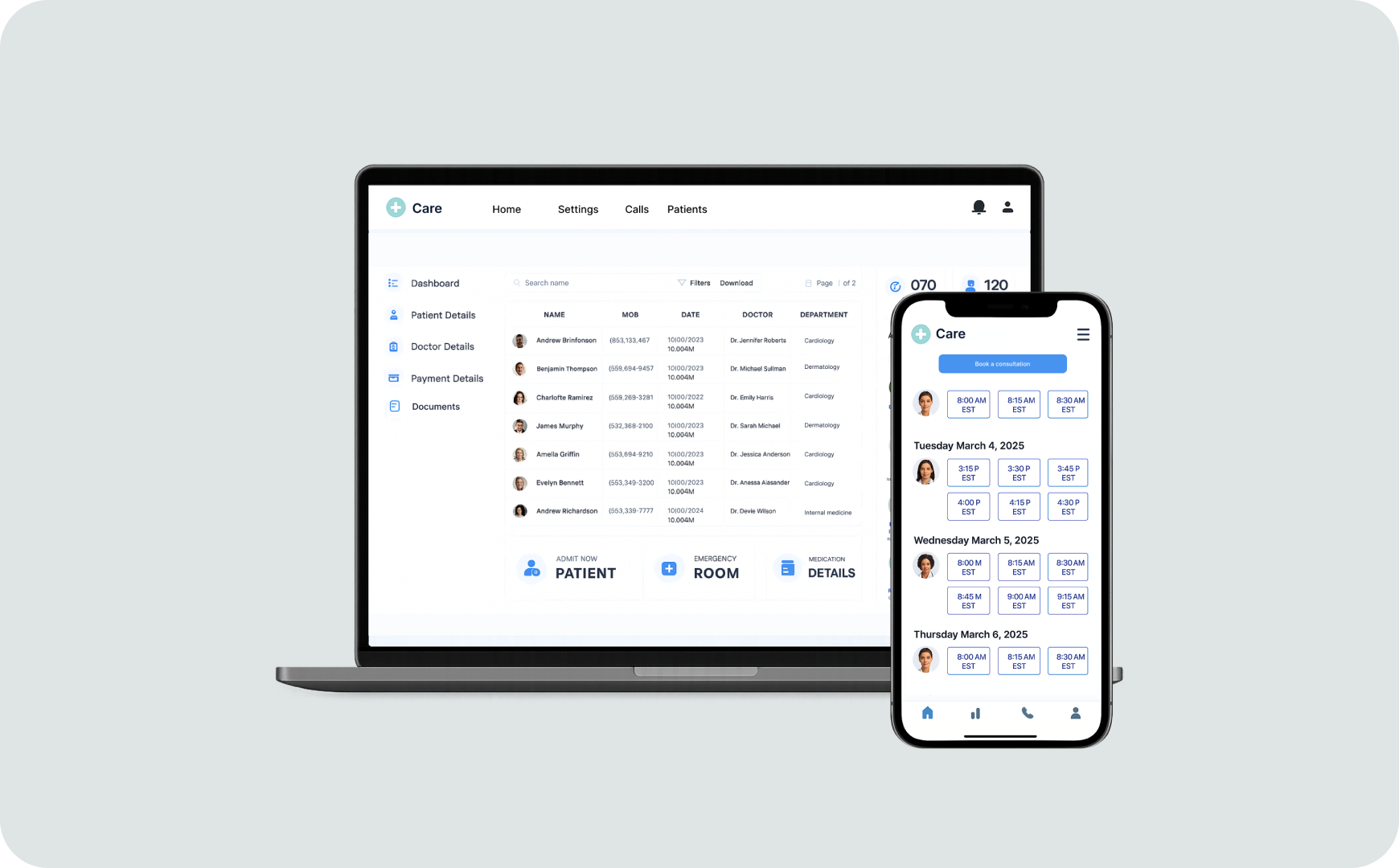Software Audit of a Multi-App HealthTech Ecosystem
We conducted a comprehensive software audit of a multi-application healthcare management system. Our aim was to assess critical processes, evaluate synchronisation, and provide a roadmap for modernisation and test automation.
HealthTech
About the project
A healthcare organisation operates across Europe. They rely on a multi-module system to manage their processes: patient visits, insurance verification, payroll, reporting, and telephony integration.
Our task was to conduct a comprehensive software audit of this ecosystem, which would lead to reliability, stability, and compliance with healthtech standards.
Client's needs
The system included several desktop applications along with a mobile app for doctors that together handled all the modules. Because each module performed critical functions, the audit had to verify technical consistency across the system.
Software Audit Scope
Since the main module calculated staff compensation and generated operational reports, we needed to check data consistency between payroll, scheduling, and reporting.
The API connected the system to encrypted EU insurance databases. The client wanted to be sure that sensitive personal data was transferred securely and that the integration could withstand technical and regulatory requirements.
The Android app required modernisation to work reliably on current devices. Our challenge was to evaluate its functionality and identify improvements so that doctors could reliably access patient information on mobile.
The system also has integrated telephony and call recording features. Calls required validation to ensure they were properly logged, stored, and linked to patient records.
Additionally, the team needed us to assess overall test coverage and deliver a clear roadmap that suggested where improvements and automation were most required.
Our Approach in Action
System Analysis
We began with the system architecture, which was built on a mixed technology stack, including .NET with WinForms for legacy desktop applications and MSSQL/MySQL databases for data storage.
During this phase, the entire ecosystem of interconnected applications was mapped. We monitored tracking of medication usage and medical devices provided to patients, such as wearable bracelets, including managing expired or non-functional devices. Patient and staff information was stored and processed to become the basis for operations across the healthtech ecosystem.
Exploratory Testing
Our team performed manual and exploratory testing across all desktop and mobile components. Testing scenarios included recording patient visits for immediate payroll calculations, updating medication and device usage across the system, synchronising appointments, call recordings, and reporting dashboards. We also generated insurance documents and verified API integration with encrypted European databases.
Mobile App Audit
The Android mobile application used by doctors was tested for consultation logging, so it’s possible to start and end a consultation remotely. We checked whether voice recording and commenting captured audio notes for services provided and verified GPS tracking quality for accurate doctor location mapping.
The audit was greatly focused on synchronisation to test whether consultation logs were correctly updated central systems.
Security & Data Integrity Review
We tested API interactions with encrypted insurance databases and verified that sensitive personal data was processed securely. This involved penetration testing, data flow validation, and stress testing of the APIs for system resilience under high load.
Our team applied encryption verification tools to confirm compliance with industry standards and conducted manual code reviews to identify potential vulnerabilities. For desktop legacy applications, we used static code analysis and sandbox testing to check for gaps in encryption practices that could pose security risks.
Test Coverage Assessment
We evaluated the existing practices and outlined areas where automation would deliver the highest impact, such as insurance API calls. We also identified opportunities to strengthen the verification of call recording synchronisation with patient records and appointments, as well as to improve monitoring of medications and medical devices.
Final Roadmap
To guide improvements, our team prepared a roadmap to expand automated test coverage across the system. We prioritised high-risk areas, including insurance API interactions, patient data handling, and synchronisation between call recordings and medical records. It also reflected the technical complexity of supporting both modern .NET modules and legacy WinForms applications within the same ecosystem.
Business Impact
The software audit gave the healthcare provider a clear view of system stability and performance at a critical stage of growth. Through a detailed review of testing and security, the audit equipped the team with a structured roadmap for modernisation.
This foundation enables the company to strengthen the platform’s technical core and improve the daily experience of its users. Doctors can get reliable access to patient records with fewer errors and less administrative work. Patients benefit from smoother appointment scheduling, more accurate insurance processing, and enhanced security of personal data storage.
reviews
We are proud to help innovative businesses thrive. Don’t take our word for it, check out how companies describe our collaboration:Our Clients Say
Reach Out
for Next Steps
Select the request type and share an overview of your idea, so we can help you move forward.Contact Us